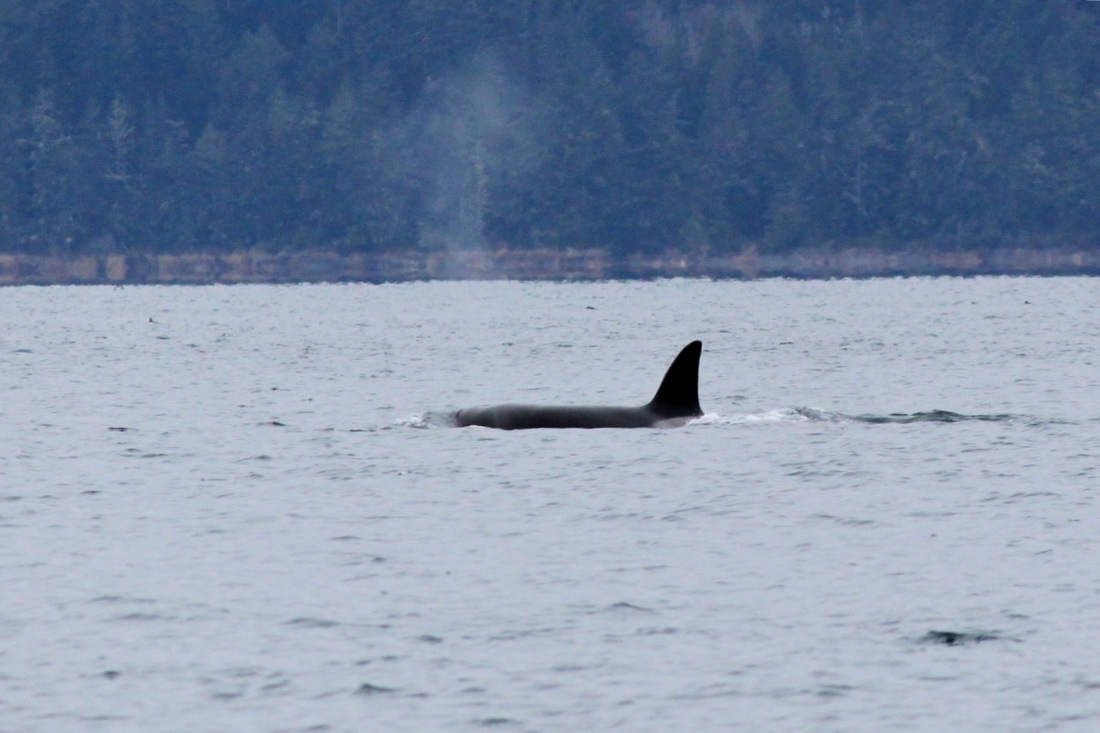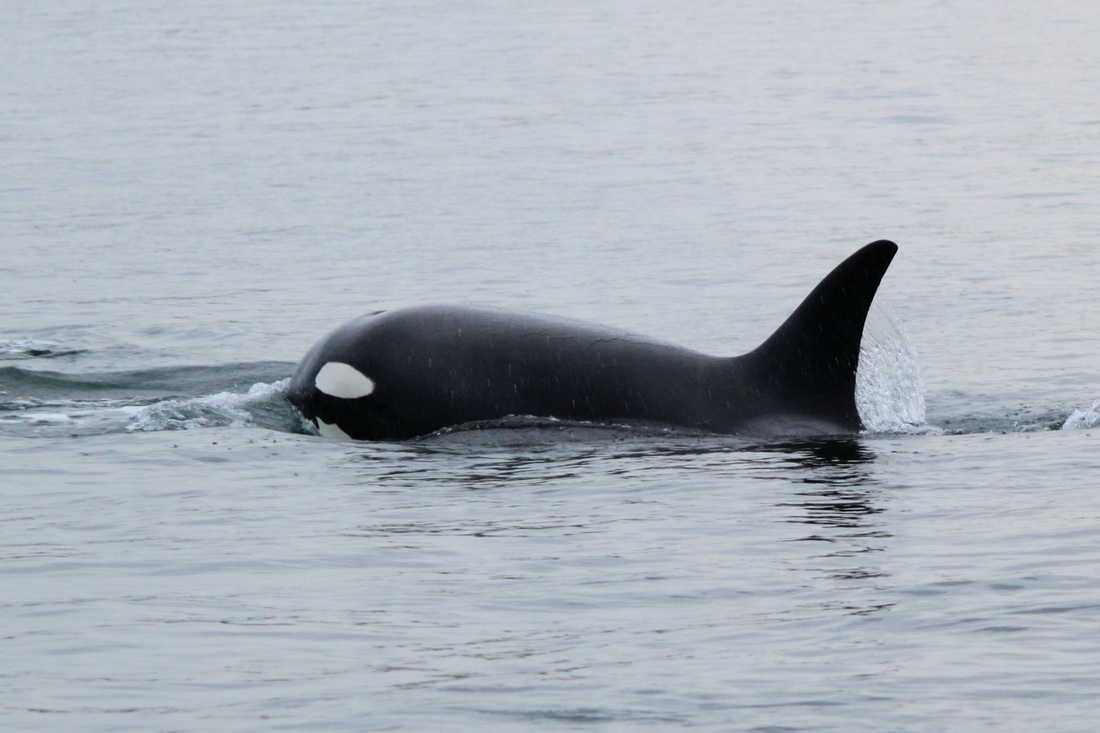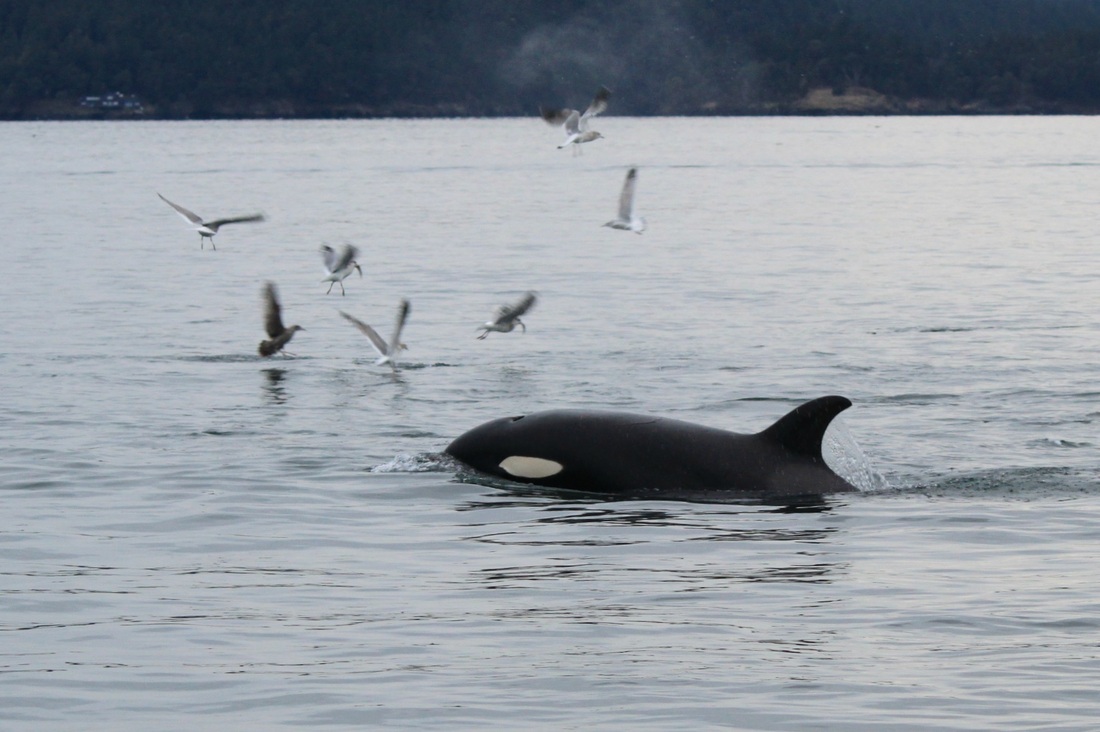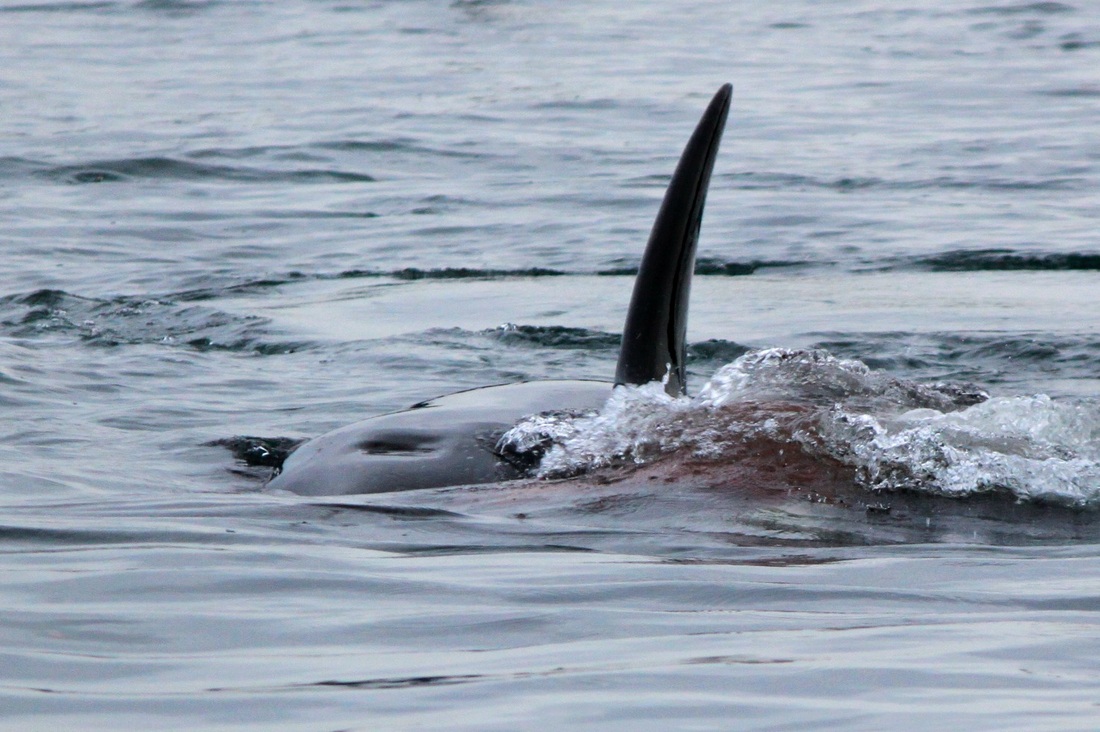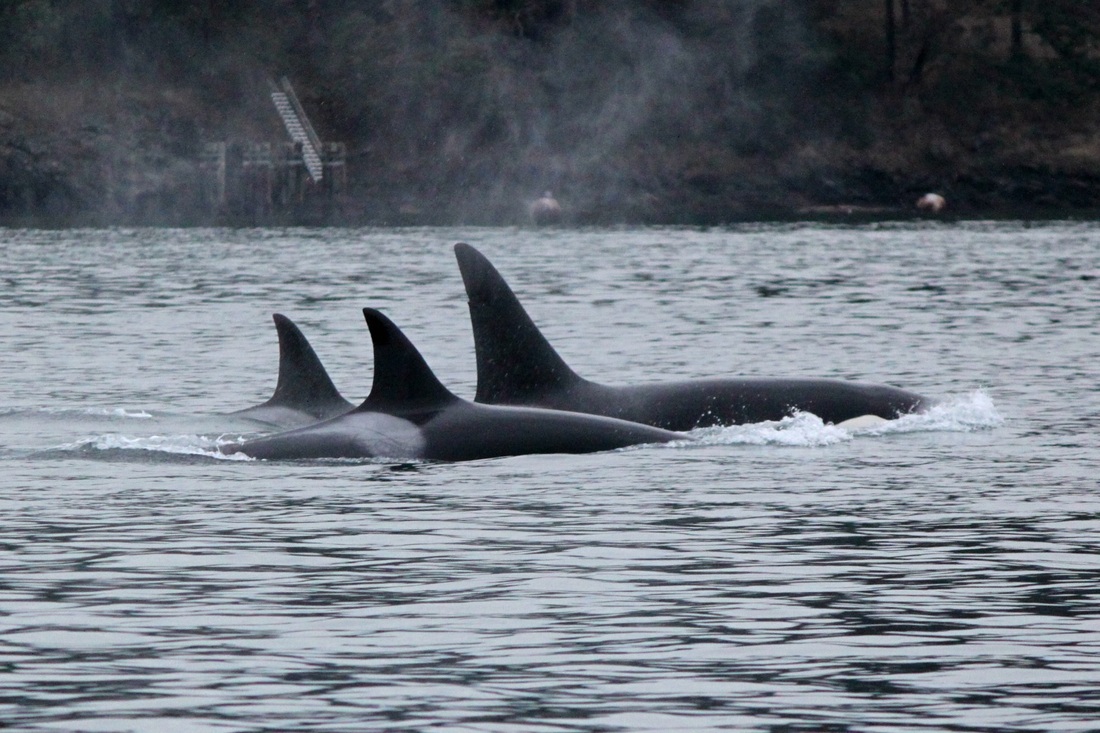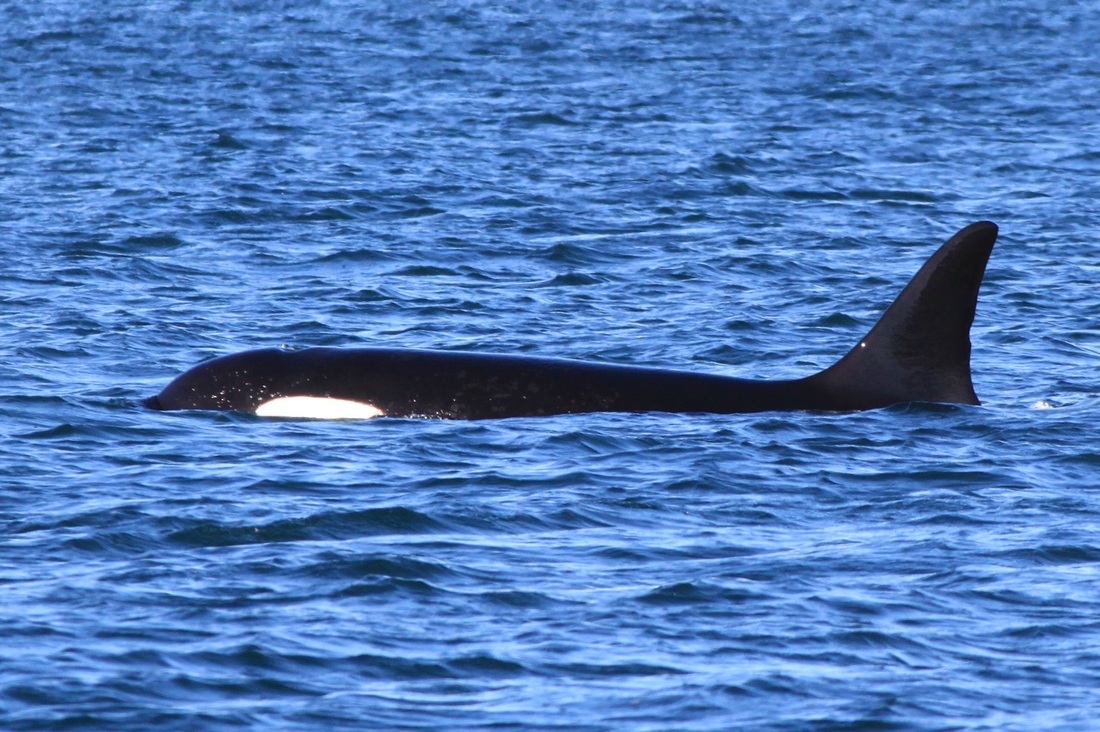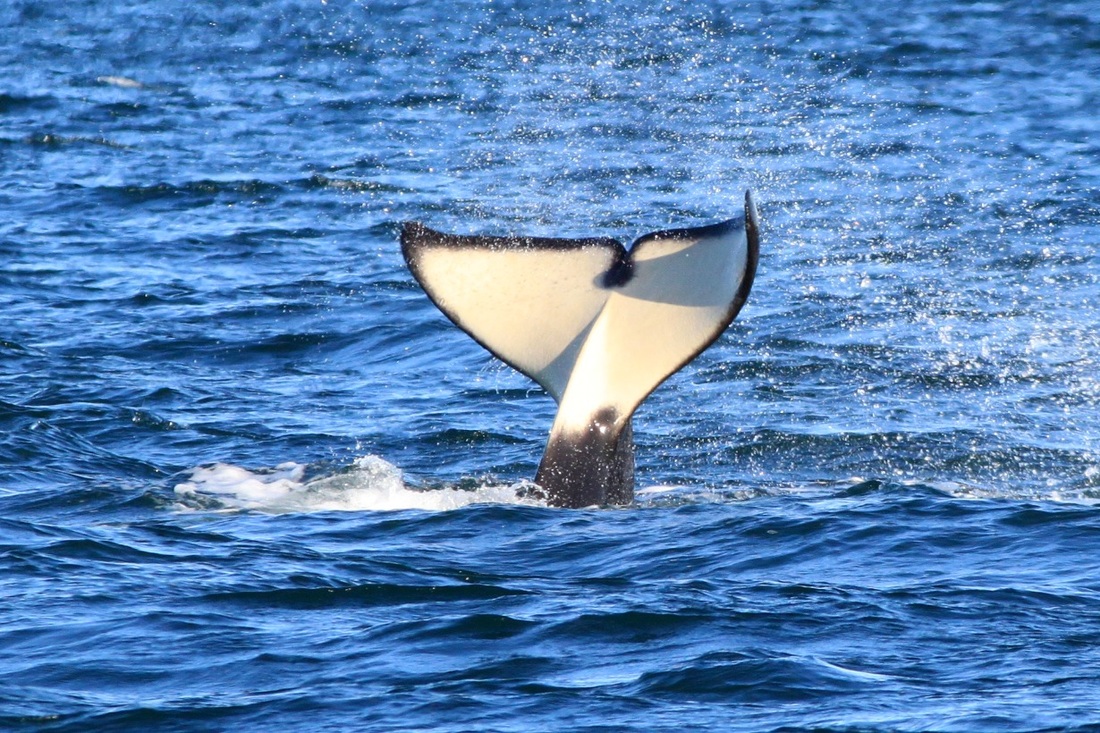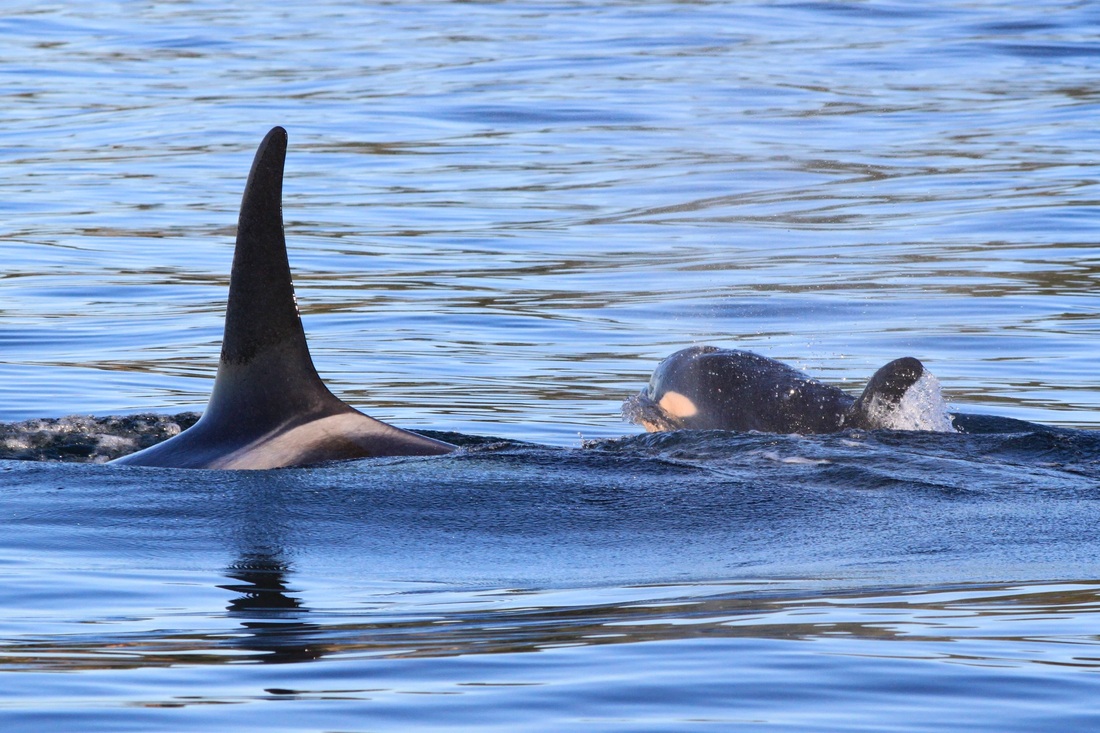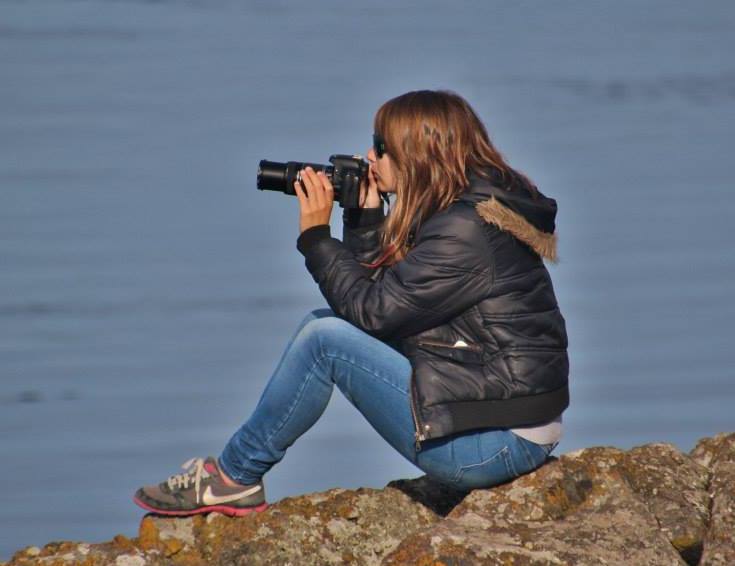Once in the Channel, we saw tons of very excited seagulls in the area, a possible indication that Transient orcas were nearby and had made a kill. Could we have really just found them? The reports were hours old by now, which meant the orcas could have traveled many miles away from their original location. Harney channel, and well as a good portion of the surrounding area had also already been searched. We slowed the boat, and it wasn't long before one of my friends spotted the orcas off to our left! What luck!! The orcas turned out to be the T060's and an unrelated female known T002B, six in total. They had obviously made a kill, but unlike the Southern Resident orcas that only feed on salmon (especially Chinook/King salmon), these Transients had probably caught a harbor seal or some other marine mammal. We observed a short post-kill celebration by the orcas before they changed into travel mode and headed past the Orcas Island ferry dock toward the Shaw Island ferry dock. Soon after, they went down on a deep dive, so we shut off the boat and waited for them to surface again. We notified the center's Dave Ellifrit to make sure he could encounter them too and it wasn't long before he arrived on scene.
A few minutes into their deep dive, the females and juveniles unexpectedly popped up right off the stern. They had either made another kill or were just continuing to feed from their last. They ended up circling around the boat for a quite bit of time and we were unable to start vessel and move due to their proximity. The male, T060C surfaced off in the distance and joined them in the feeding soon after. There was good amount of blood in the water and I even saw remains (looked like lungs) as they sank beside the boat. I had never been so close to a kill before. While all this was going on, I managed to film a bit of it with my new GoPro and you can view the footage (no audio) below! T060D surfaces with flesh in its mouth at 1:14. T002B spy hops at 1:32.
Please do not use any of my photos without permission. Just ask.
